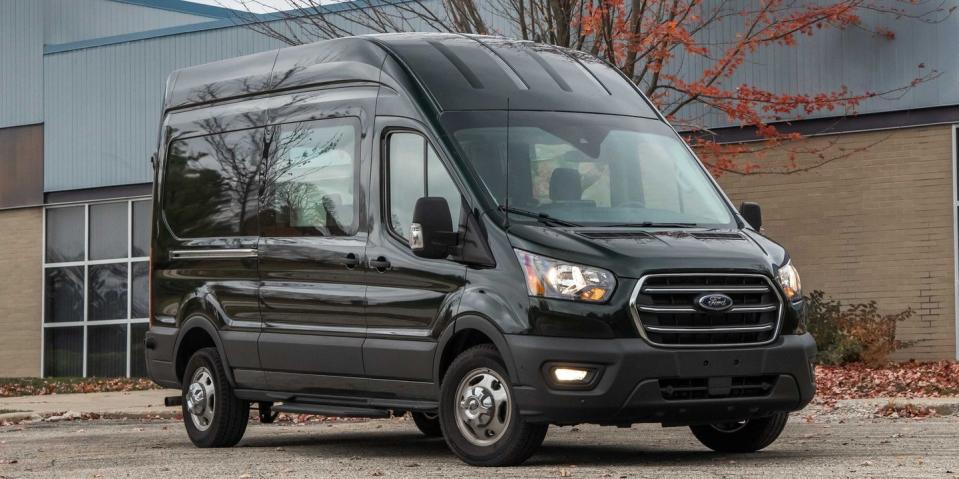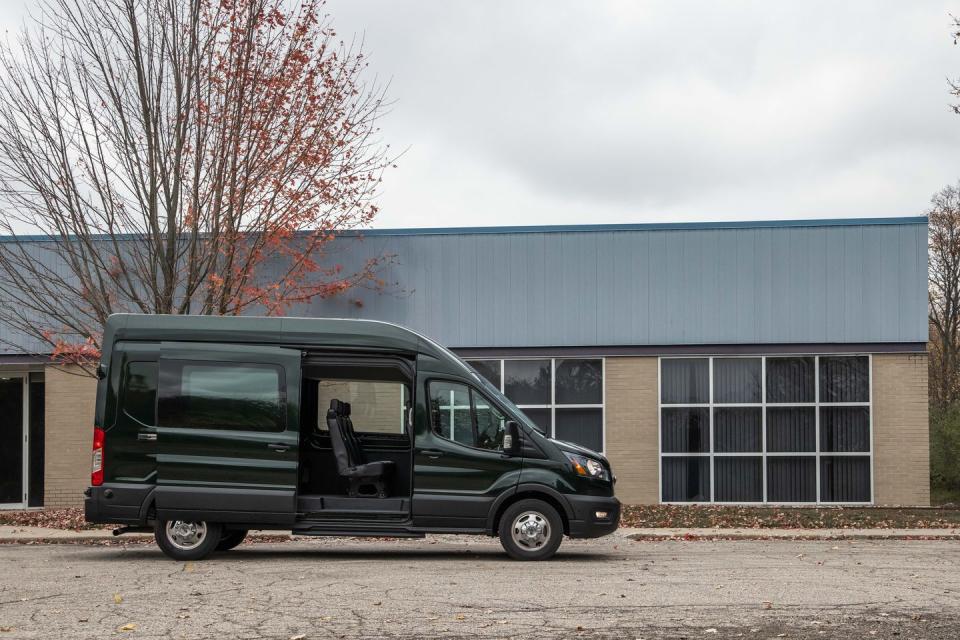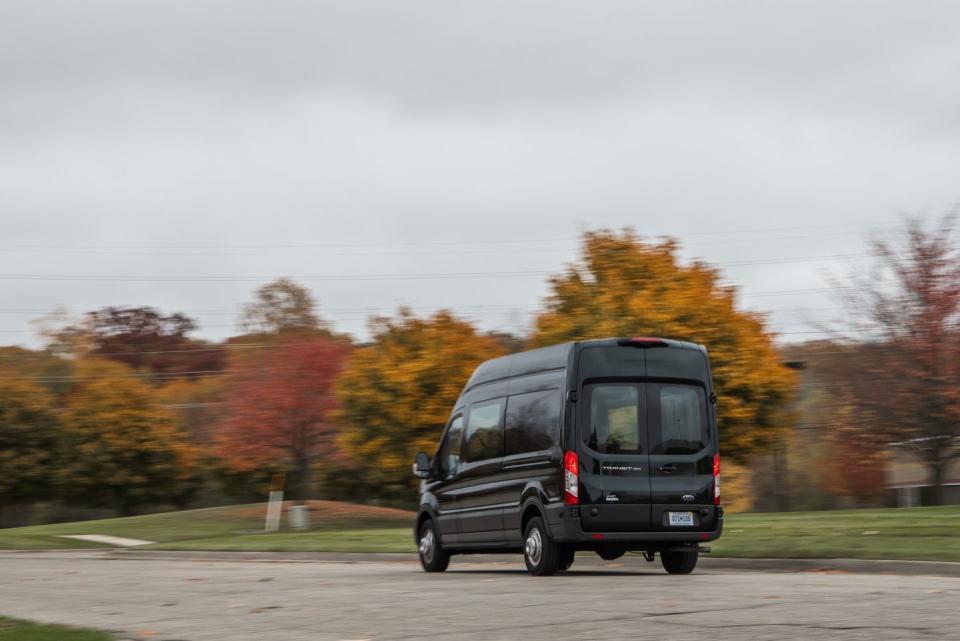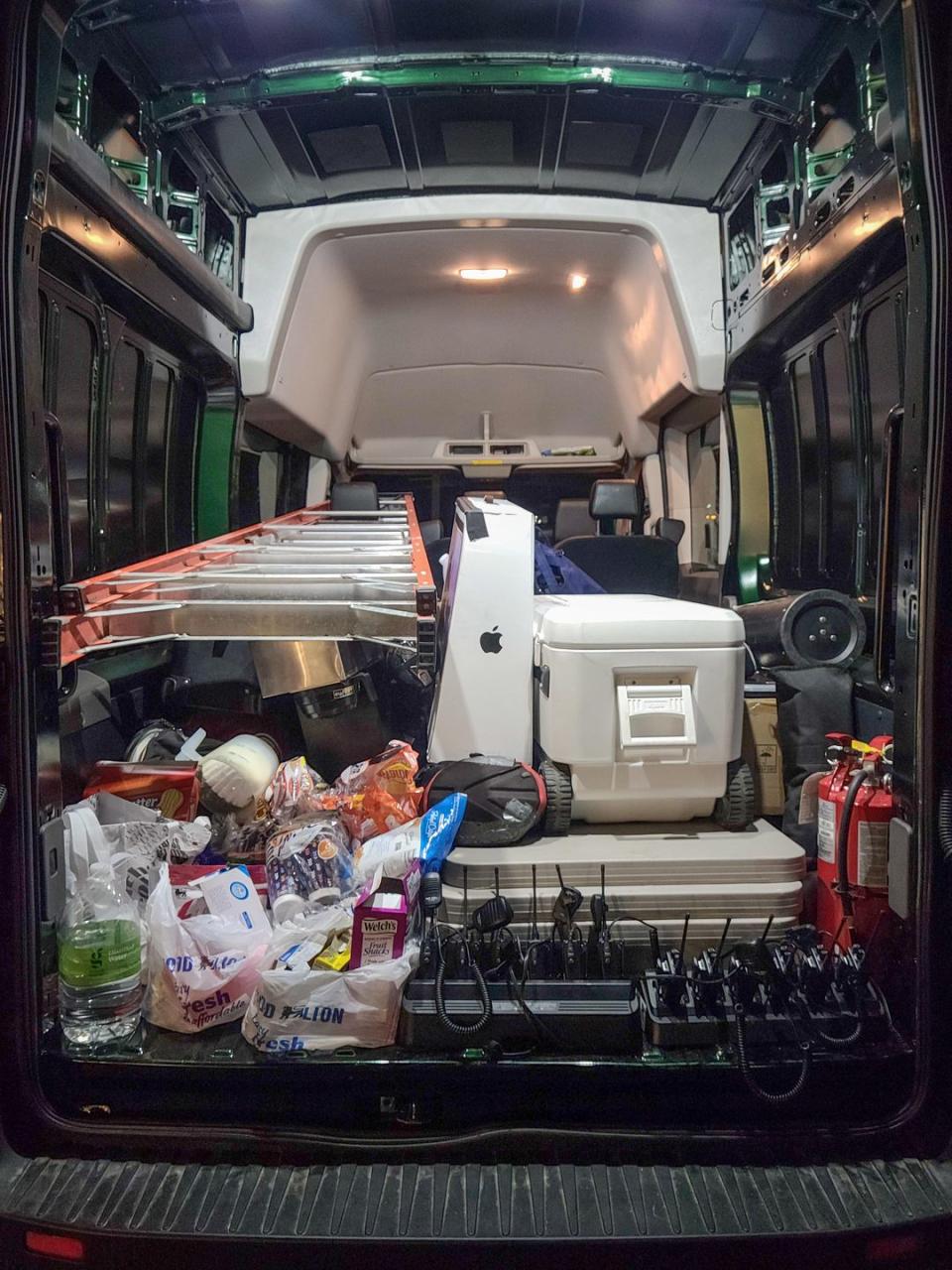Tested: 2020 Ford Transit 350 Continues to Outpace Its Rivals

The 2020 Ford Transit wants to maintain its position as the leader in the full-size van segment. That goes for both substance and sales numbers, with Ford's annual sales nearly doubling those of the next-highest van—and that's counting the Chevrolet Express and GMC Savana together—tripling the numbers of the Mercedes-Benz Sprinter, and outpacing the Nissan NV by nearly tenfold. The Transit's success hinges on the diversity of its lineup, with Ford offering myriad configurations that can be tailored to suit just about any need. And for 2020, Ford introduced a new Crew variant that combines elements from both passenger and cargo vans, adding a second row of seats so more passengers can ride along to the destination. Ford says this mixed-use configuration was added to the lineup thanks to customer demand.

One of the Transit's most underrated traits is its athleticism, relatively speaking. The unibody underpinnings and strut-type front suspension make this seemingly building-sized, high-roof van feel much smaller than its proportions, with crisp turn-in and a compliant chassis. The fun-to-drive aspect is particularly true when optioned with the punchy 310-hp twin-turbo V-6 and its 400 pound-feet of torque. A sequentially turbocharged inline-four diesel, borrowed from the foreign-market Ranger, was reportedly in the works for the 2020 model year but never materialized. And the 3.2-liter five-cylinder diesel is dead. But Ford did give the Transit an all-wheel-drive option, providing an enticing new option for the #VanLife overlanding crowd. While we didn't find ourselves in any off-road or snowy environs to test it out, Ford says the system is capable of sending 100 percent of its torque to the front wheels, which would be welcome for winter driving. When serving as our mobile headquarters and beast of burden at our annual Lightning Lap event, the Transit even saw some gentle tracking as we shuttled our corner workers around Virginia International Raceway's Grand West configuration in between lapping sessions. Needless to say, the combination of balance, power, and control was unexpectedly fun to hustle around for something so hulking.

The Crew trim meant that our Transit had more glass than an Ann Arbor head shop, which not only gave us an excellent view of the Appalachian Mountains but also great outward visibility to help us navigate through the throngs of idle left-lane dwellers. Every interior surface other than the seats and steering-wheel rim seems to be made of plastic, but the Transit interior is well executed in terms of comfort and convenience. There's an abundance of cupholders and miscellaneous compartments to stow things. Our Transit came with the upgraded 8.0-inch Sync 3 infotainment system, which was far easier to use and more familiar than the outdated standard 4.0-inch unit. And the seats were uncharacteristically comfortable, good enough for 10 or more hours at a time, but passengers were left wondering why only the driver's seat was given an armrest.
Even with the Crew's second-row seating encroaching on space, the Transit's 300-cubic-foot cargo hold was able to fit the same amount of gear we normally put in a two-passenger cargo van. Once laden, the Transit's suspension exhibits none of the bouncy, untamed motions that it does when empty, and it actually rides with uncanny civility. Though we came nowhere close to our van's 3,512-pound payload, it's worth mentioning that its payload is only a few hundred pounds shy of a three-quarter-ton pickup and it gets the added benefit of being enclosed from the elements.

In terms of numbers, our Transit 350 AWD High Roof test vehicle betters just about everything in the full-size van segment in terms of acceleration, save for a 2017 Ford Transit medium-height roof we previously tested that weighed about 565 pounds less. In all-out acceleration, our Transit 350 AWD hit 60 mph in 6.7 seconds and crossed the quarter-mile mark in 15.3 seconds at 89 mph, matching the zero-to-60-mph time of the medium-height-roof model and falling behind in the quarter-mile by just a single tenth of a second and 1 mph. The parity in acceleration can be credited to Ford's ubiquitous 10-speed automatic, which joins the Transit lineup for 2020. We did notice that the transmission has a tendency to occasionally fumble for the right gear when driving around the city, but that didn't seem to hamper it in our passing tests, where the Crew posted a 30-to-50-mph passing time of 3.6 seconds (0.2 better than the medium-roof) and 4.9 seconds in the 50-to-70-mph passing test (0.1 slower). That's impressive given the increased weight and aero drag of our high-roof Crew. Hammer the throttle, and the new transmission's four extra ratios certainly help keep the EcoBoost in the thick of its powerband.
But the big Transit couldn't hide its extra heft when it came to braking. Its additional weight contributed to a 192-foot 70-to-zero-mph stop, 21 feet more than the medium-roof. In just less than 1800 miles of mostly highway driving (most of which was hauling gear to Virginia for Lightning Lap), we saw a figure of 13 mpg. That's not too bad, considering that with no load in our 200-mile 75-mph highway fuel-economy loop we managed 16 mpg.

Our Transit came to us with a lengthy list of options, with the upcharge for the Ecoboost V-6 ($1,495) and all-wheel drive ($4,695) alone accounting for $6,190. Other major options included a front and rear split-view camera ($1,135), adaptive cruise control ($755), forged aluminum wheels ($695), and blind-spot monitoring ($595). The British-Racing-Green-esque paint, called Green Gem Metallic, is a $200 option. Extras like a rear-window defroster ($175), an auxiliary fuse panel ($385), auto headlamps ($35), a 110-volt power outlet ($215), and D-pillar assist handles ($60) added up to an as-tested price of $55,515. Notably absent from the options roster: remote start.
After spending time with the Transit, it's easy to understand why it's the best-selling full-size van on the market. It possesses all of the workhorse capability that you expect but with more refinement and comfort than its competitors. The Transit probably didn't have to offer sleeper-status performance on top of all that, but we're glad it does.
You Might Also Like

 Yahoo Finance
Yahoo Finance 